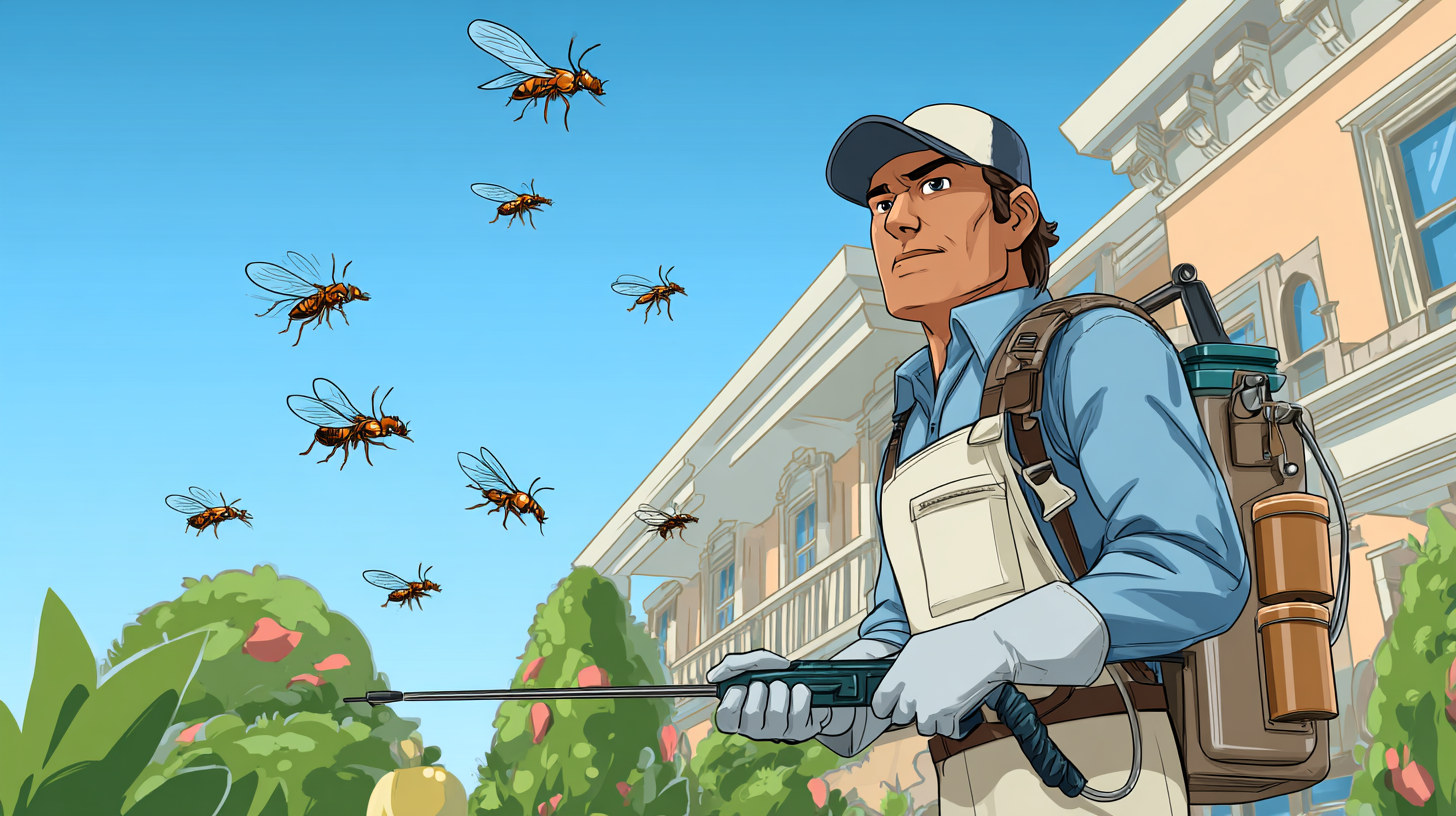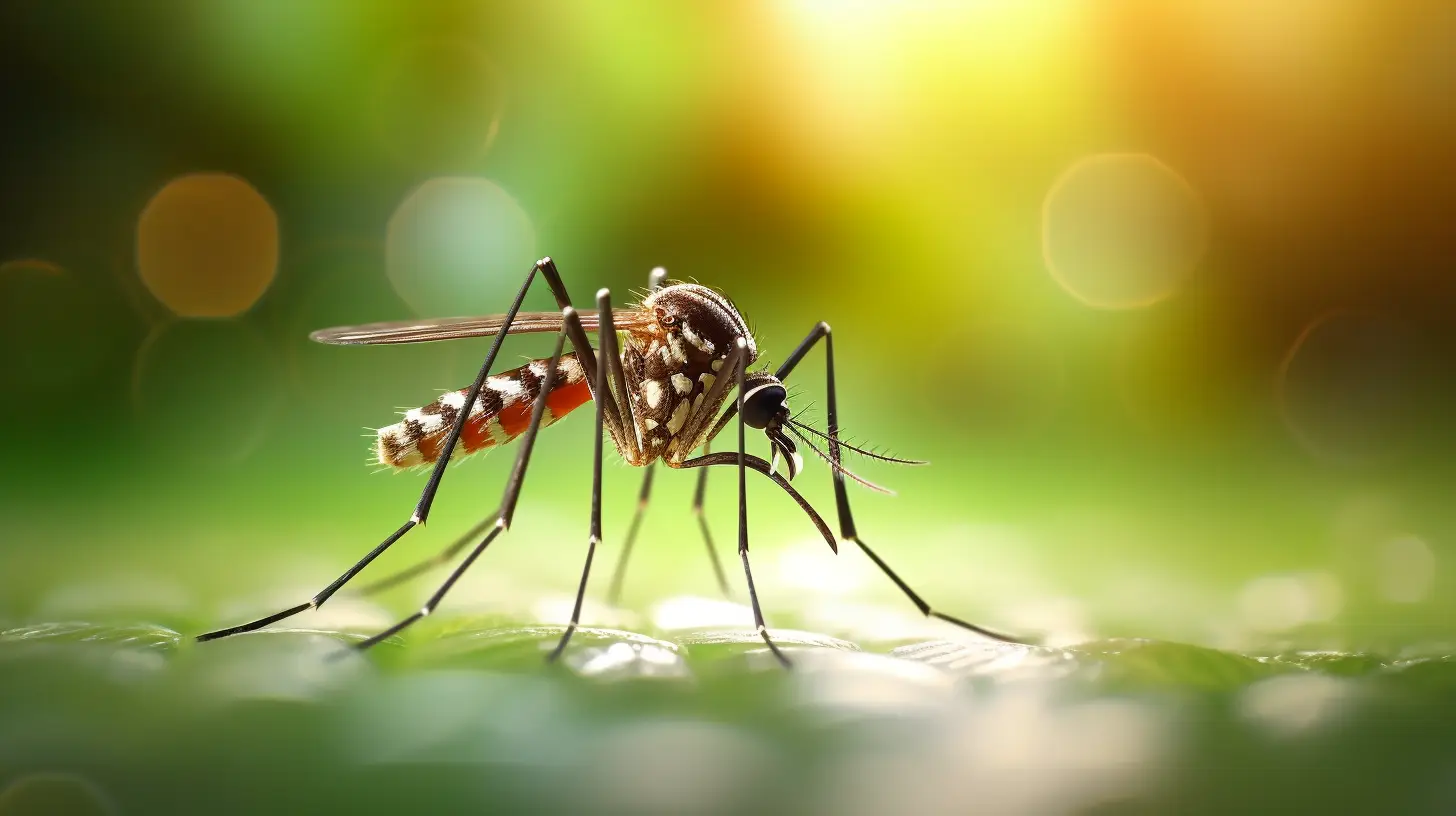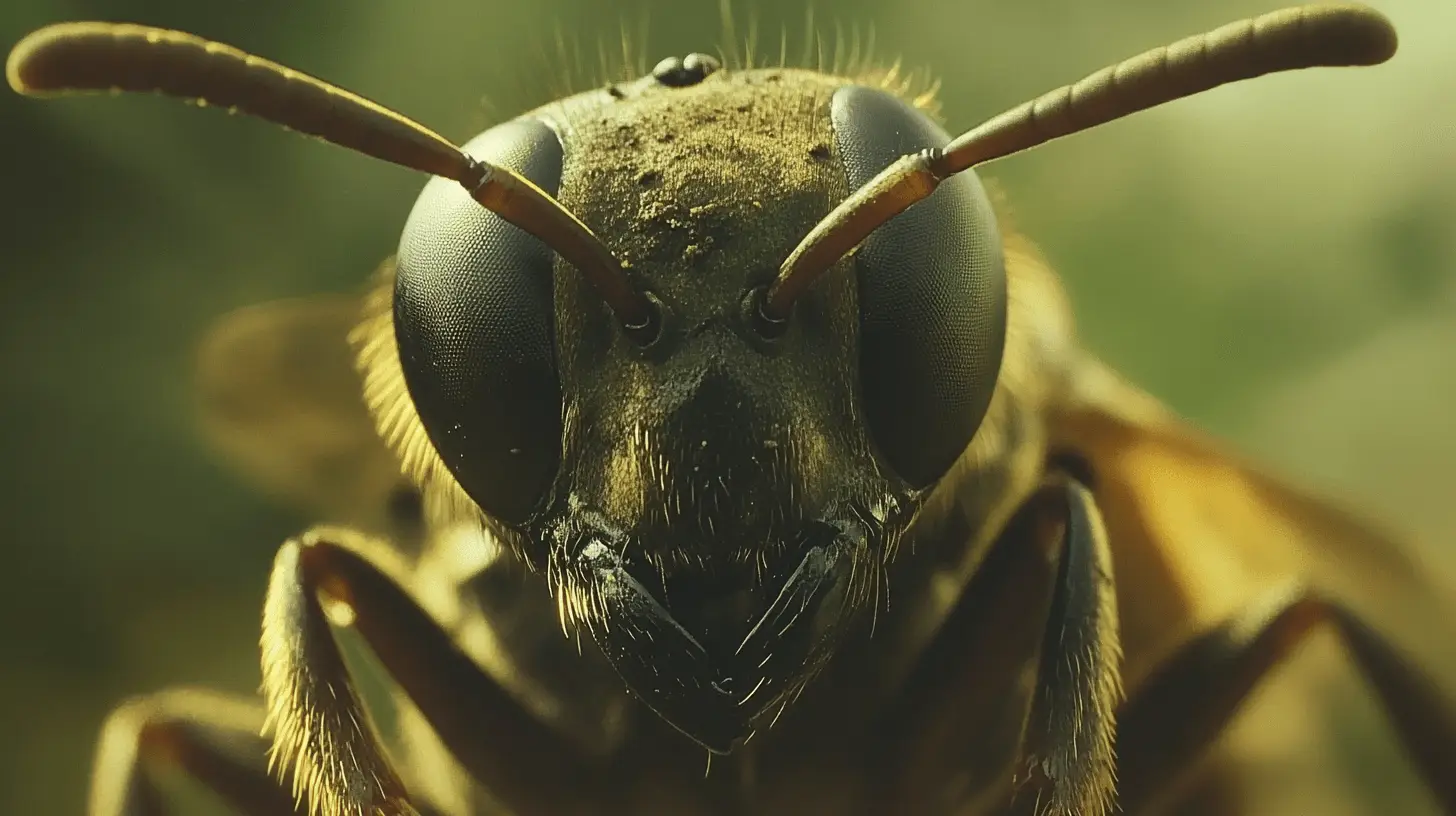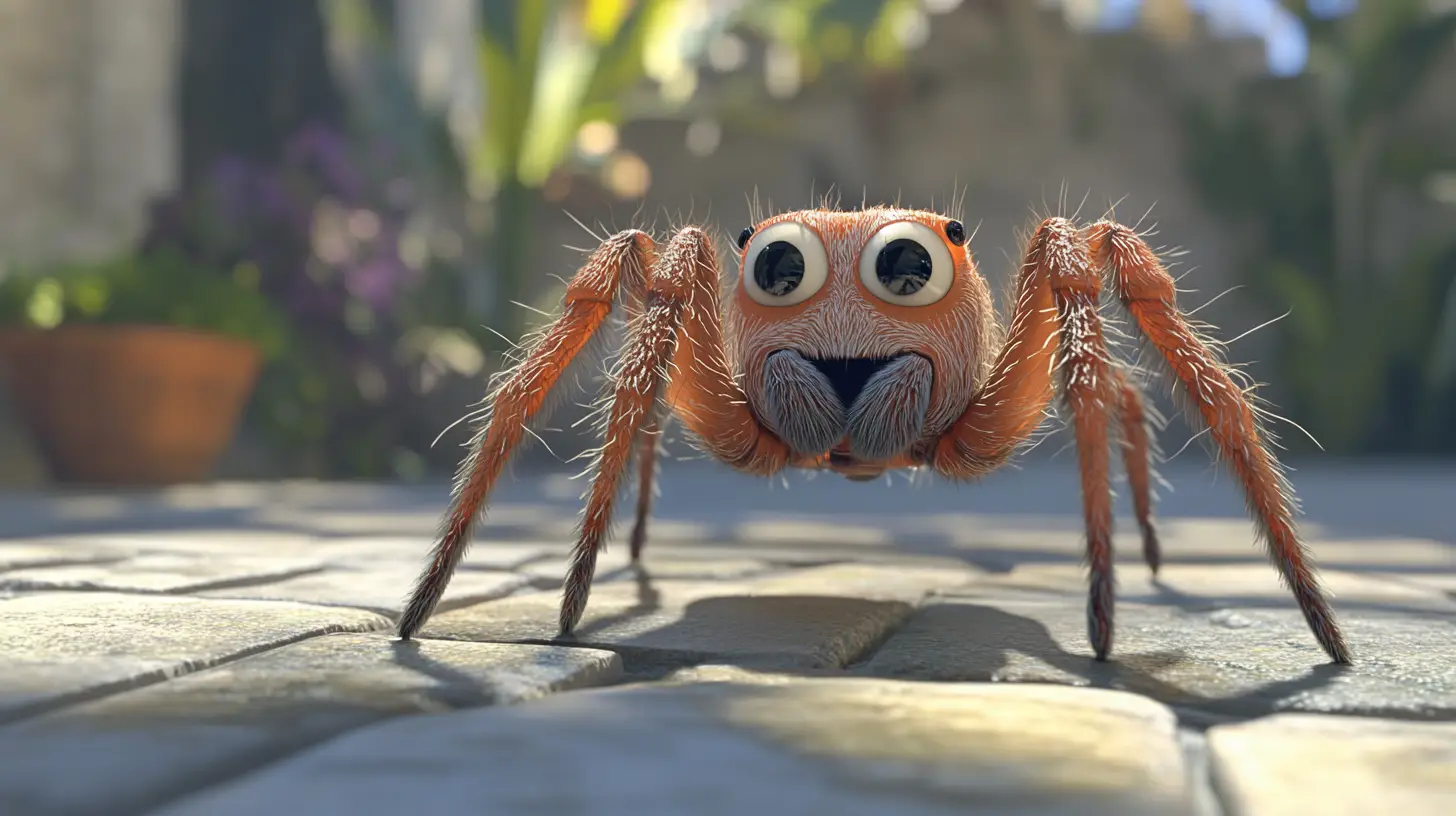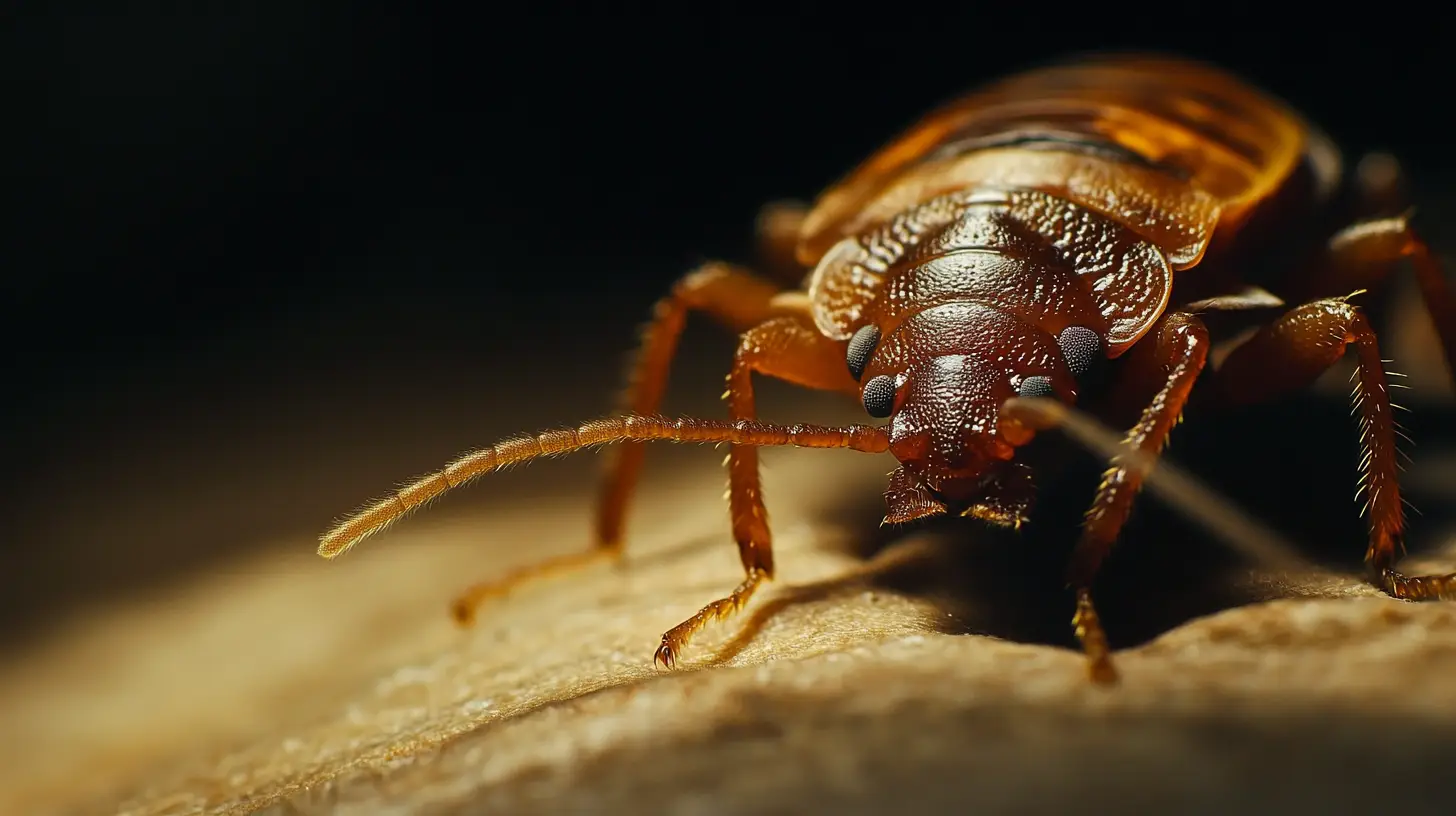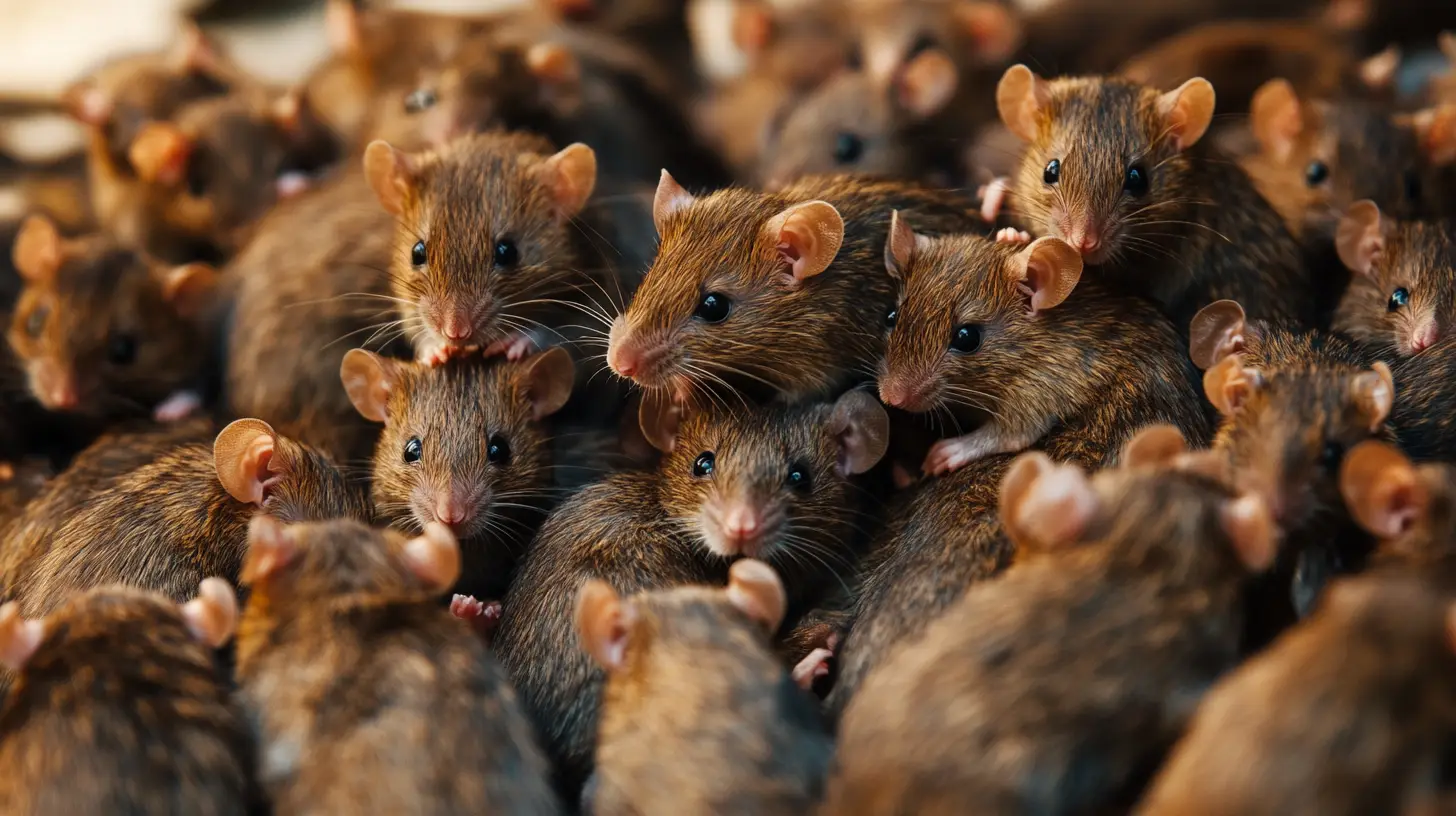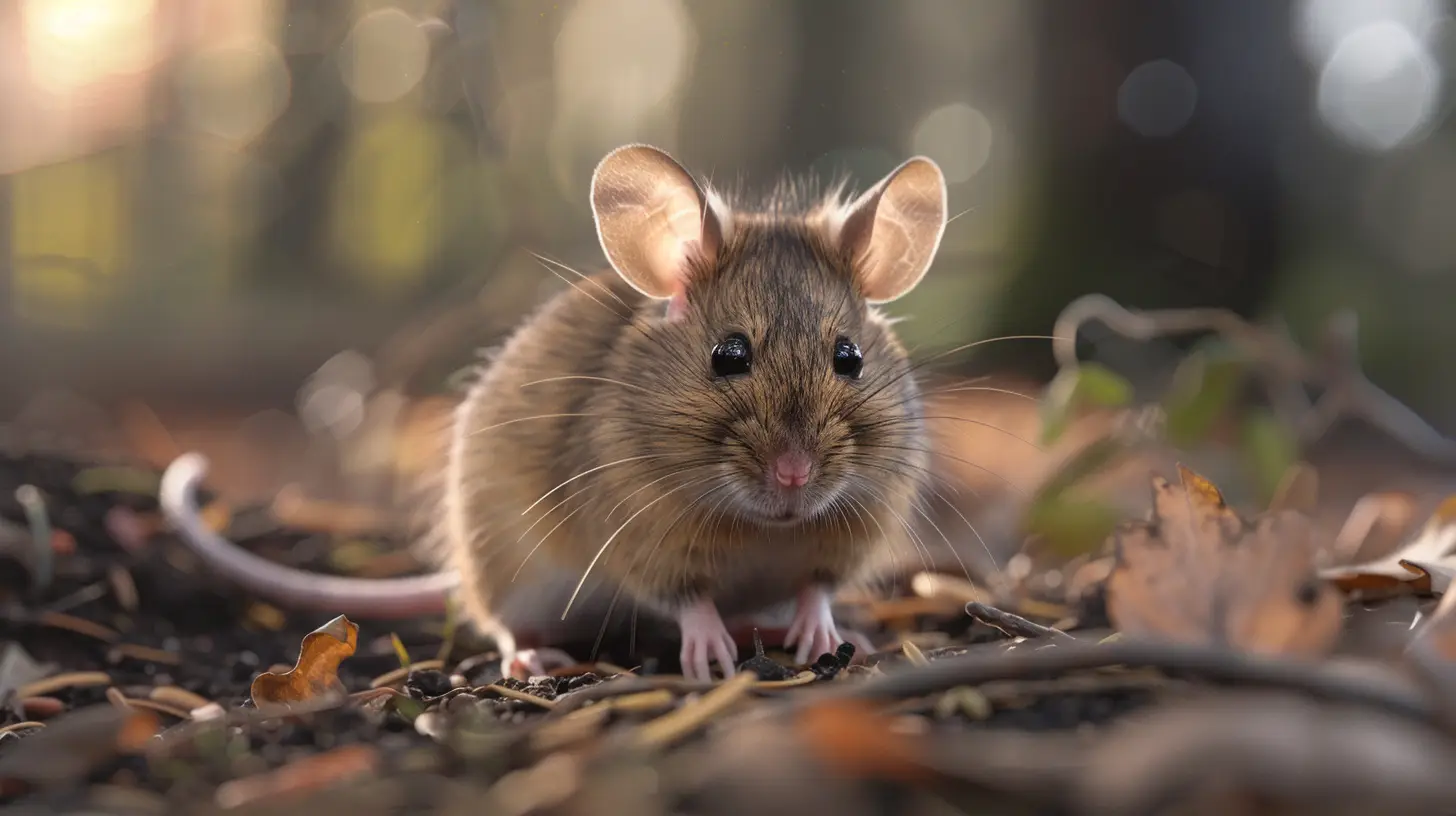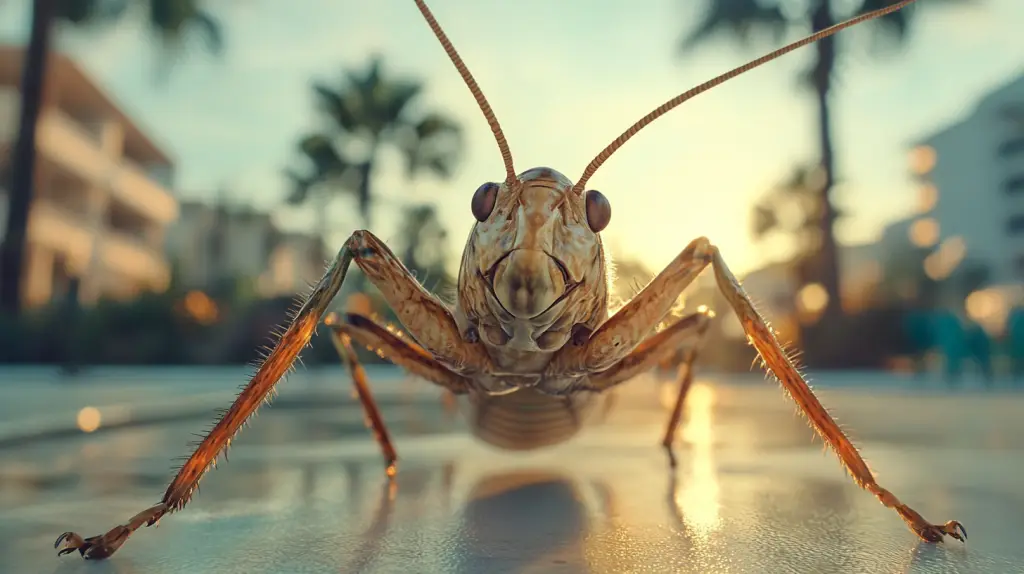
Table of Contents
If you’re trying to get rid of camel crickets around your Venice, FL home, you’re not alone. These unusual, humpbacked insects—sometimes called “spider crickets” because of their long, spider-like legs—thrive in humid areas, making basements, crawl spaces, and garages ideal spots for them. Unlike other crickets, camel crickets are silent, which can make them difficult to notice until you stumble upon one, often as it leaps several feet into the air. They don’t chirp, bite, or carry harmful diseases, but their presence can still be unsettling, especially when they’re lurking in dark corners and jumping unexpectedly.
Camel crickets are scavengers and will feed on almost anything, from decaying plant matter to fabrics and household items, especially if they’re damp. Their nocturnal habits and preference for dark, hidden areas mean they’re often discovered at night or in low-traffic areas. Though generally harmless, these crickets can become a nuisance if left unchecked. In this guide, we’ll explore the best ways to get rid of camel crickets, from preventive measures to effective treatments, so you can reclaim your home from these silent, springy intruders. Let’s dive into practical steps to help keep camel crickets out of your living space and create a more comfortable, pest-free environment.
Key Takeaways
- Identify and Understand: Camel crickets are silent, humpbacked insects drawn to damp, dark spaces like basements and crawl spaces. Unlike typical crickets, they don’t chirp or fly but use their strong legs to jump.
- Moisture Control is Essential: Reducing humidity with dehumidifiers and fans, fixing leaks, and addressing moisture sources are key steps to making your home less attractive to camel crickets.
- Effective Removal Methods: Use vacuuming, glue traps, and soapy water traps to capture and remove camel crickets indoors. Diatomaceous earth (DE) can help in areas where crickets congregate by causing dehydration.
- Seal Entry Points: Prevent future infestations by sealing cracks, crevices, and entry points around windows and doors. Essential oils like peppermint can also act as natural repellents around these areas.
- Seek Professional Help if Needed: For larger infestations or long-term solutions, professional pest control can provide targeted treatments and ongoing maintenance options.
Key Facts About Camel Crickets
Camel crickets, also called cave or spider crickets, have a unique humpbacked shape, long antennae, and enlarged hind legs for jumping. They are active at night, prefer moist, dark areas, and may enter homes during dry spells. While harmless, they can become a nuisance and may damage fabrics if they infest indoor spaces.
Meet the Camel Cricket – Venice’s Silent, Humpbacked Visitor
Camel crickets, also known as cave crickets or spider crickets, are distinctive insects with a humpbacked appearance and long, powerful legs designed for impressive jumps. Ranging from 1/2 inch to 1 1/2 inches long, these crickets are light to dark brown in color and often mottled, giving them a camouflaged look. Unlike most crickets, they’re silent and lack wings, so you won’t hear them chirping or flying around. Camel crickets prefer damp, dark environments, and while they’re typically found outdoors under logs, stones, or in leaf litter, they often make their way indoors into basements, crawl spaces, and garages, especially during hot or dry weather.
These nocturnal scavengers are omnivorous, feasting on various materials, including wood, carpet, fungi, and even other insects. Though harmless to humans, they can become a nuisance if they move inside in large numbers, potentially damaging fabrics, clothing, and houseplants. To prevent camel crickets from entering your home, reducing moisture, sealing entry points, and removing outdoor debris are effective strategies. In cases of large infestations, professional pest control may be necessary to fully reclaim your space.
Understanding Camel Crickets – Appearance, Behavior, & Habitat
Camel crickets are easily identified by their distinctive humpbacked shape, which resembles a camel’s hump, and their oversized, springy hind legs that enable them to jump long distances when startled. Ranging from 1/2 inch to 1 1/2 inches long, they’re typically light to dark brown and often have mottled patterns or dark bands on their segments. Unlike other crickets, camel crickets lack wings, making them both silent and unable to fly, which sets them apart from more common cricket species.
Key Points for Identifying Camel Crickets
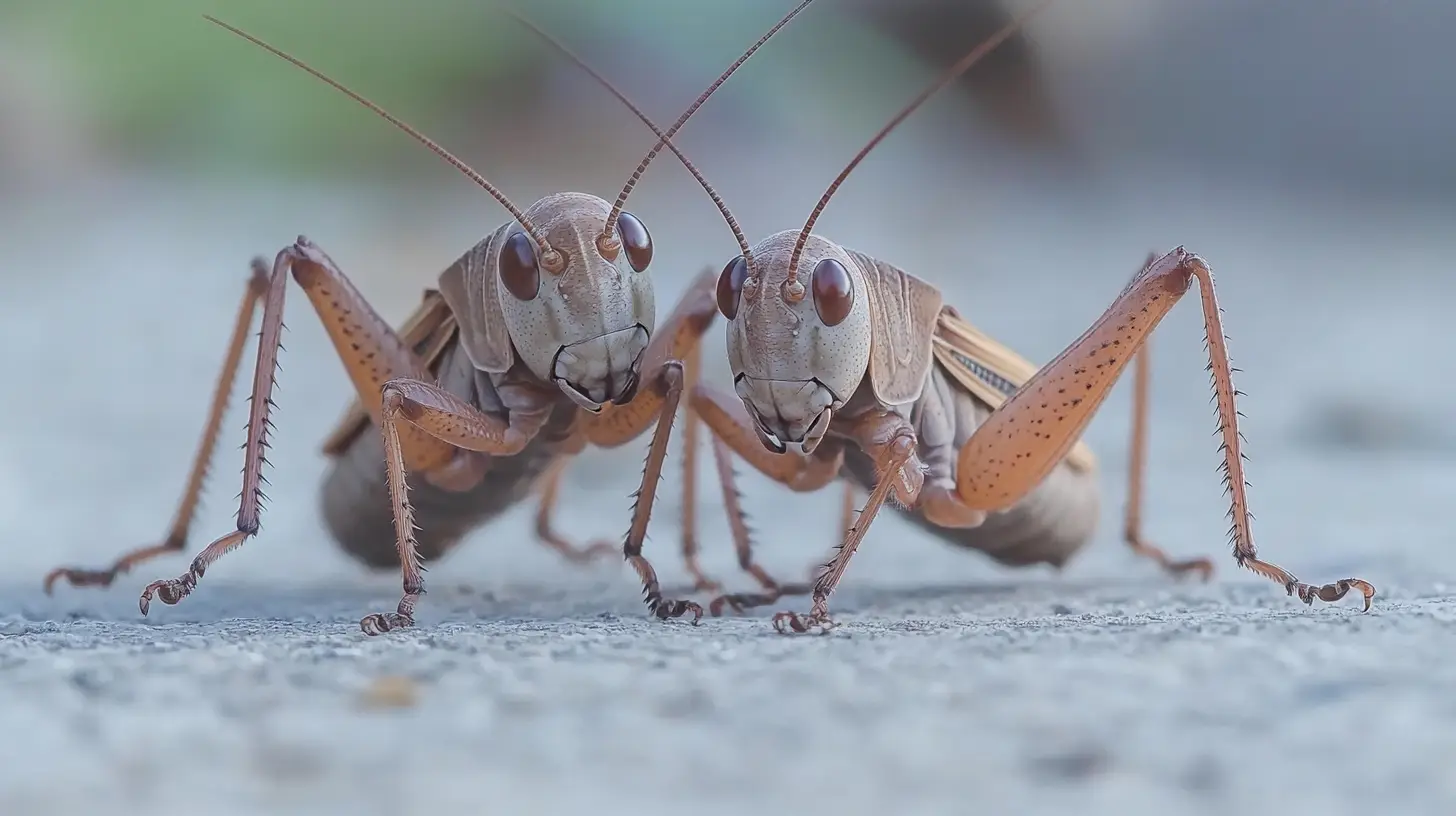
1. Appearance
Camel crickets have a humpbacked shape, resembling a camel’s hump. Their size ranges from 1/2 inch to 1 1/2 inches long, and they are light to dark brown, often mottled with dark bands on some segments. They feature long antennae and large hind legs, ideal for jumping, and adults lack wings.
2. Distinctive Features
Unlike other crickets, camel crickets do not produce chirping sounds because they lack sound-producing organs. They also cannot fly, using jumping as a primary defense mechanism when startled.
3. Habitat
These crickets prefer damp, cool, and dark environments, often found in caves, basements, crawl spaces, garages, or under logs and stones. They may migrate indoors during hot or dry weather conditions.
4. Behavior
Camel crickets are nocturnal, meaning they are active at night and typically hide during the day. They often congregate in groups and can survive extended periods without food.
5. Other Names
Commonly known as cave crickets or spider crickets, camel crickets are also sometimes called “sprickets” or “land shrimp” due to their appearance.
6. Differences from Other Crickets
They are distinct from other cricket species as they do not chirp or fly and have a unique humpbacked shape.
To identify camel crickets, look for their characteristic humpbacked appearance, large jumping legs, and brown coloration in damp, dark areas. Their inability to fly or produce chirping sounds further sets them apart from other crickets.
These crickets thrive in damp, cool environments, often found in basements, crawl spaces, garages, or outdoors under stones and logs. When the weather outside becomes hot or dry, they may move indoors, where they often congregate in groups. Known for their nocturnal habits, camel crickets are active at night and hide during the day. They’re also called “cave crickets,” “spider crickets,” and occasionally “land shrimp” due to their unique appearance. Their absence of chirping, inability to fly, and characteristic humpbacked shape make them easy to distinguish from other types of crickets in homes or outdoor environments.
How to Get Rid of Camel Crickets – Tips for a Cricket-Free Home
If you’re trying to get rid of camel crickets in your home, several effective methods can help you manage and reduce their numbers. Start by vacuuming areas where camel crickets are visible—using a shop vacuum is quick and effective, and remember to dispose of the contents outside to prevent re-entry. Glue traps are another great option; place these traps in areas where camel crickets are frequently seen, and consider adding a piece of dry cat food as bait to increase effectiveness.
Guide on How to Get Rid of Camel Crickets
1. Vacuuming
– Use a shop vacuum to remove camel crickets quickly from areas where they are seen. Dispose of the bag or empty the canister outside to prevent them from escaping.
2. Glue Traps
– Place sticky glue traps in areas where camel crickets are frequently spotted. Adding a small piece of dry cat food as bait can enhance the trap’s effectiveness.
3. Reduce Moisture
– Camel crickets thrive in damp environments. Use dehumidifiers and fans to dry out basements and crawl spaces. Repair any leaks or sources of moisture in your home.
4. Soapy Water Traps
– Fill shallow bowls with water and add two tablespoons of dish soap. Place these traps where camel crickets are active; they will be attracted to the water but will drown upon contact.
5. Diatomaceous Earth (DE)
– Sprinkle food-grade diatomaceous earth in areas where camel crickets congregate. DE works by damaging their exoskeletons, causing dehydration and death.
6. Seal Entry Points
– Inspect your home for cracks and crevices where camel crickets might enter, sealing them with caulk or similar materials. Keep doors and windows closed or screened to prevent entry.
7. Essential Oils
– Use essential oils like peppermint or lemon, which repel camel crickets. Mix with water and spray around entry points and infested areas.
8. Declutter
– Reduce clutter around your home, particularly in basements and storage areas, to remove hiding spots for camel crickets.
9. Professional Pest Control
– If DIY methods prove ineffective, consider hiring a pest control professional for targeted treatments and long-term solutions.
Prevention Tips
- Maintain a dry environment with dehumidifiers.
- Store firewood at least 15-20 feet away from your home.
- Keep food sources sealed, including pet food.
- Regularly clean areas where moisture accumulates.
By employing these methods, you can effectively manage and reduce camel cricket populations in your home.
Since camel crickets are attracted to damp environments, reducing moisture is essential. Dehumidifiers and fans can help dry out basements, crawl spaces, and other humid areas, while fixing leaks and addressing sources of moisture will make your home less inviting. For DIY trapping, soapy water traps are effective: fill shallow bowls with water and a couple of tablespoons of dish soap, which will trap and drown the crickets. Diatomaceous earth (DE) can also help by damaging their exoskeletons, leading to dehydration.
Preventing future infestations is equally important. Seal entry points with caulk to stop crickets from entering, and use essential oils like peppermint or lemon to deter them from entry points. Decluttering and keeping storage areas tidy will also remove hiding places and make your home less appealing. And if DIY methods aren’t enough, a professional pest control service can offer targeted solutions and long-term results. By following these steps, you can create an environment that keeps camel crickets out and ensures your home stays comfortable and pest-free.
In conclusion, effectively getting rid of camel crickets requires a mix of targeted removal methods, moisture control, and preventive measures. By vacuuming, setting glue traps, and reducing moisture in areas like basements and crawl spaces, you can tackle existing populations. Simple measures such as sealing entry points, using essential oils, and keeping your home clutter-free can help prevent future infestations.
Camel crickets may prefer damp, dark spaces, but with these strategies, you can keep them out and create a less hospitable environment. And if DIY methods fall short, a professional pest control service can provide reliable, long-term solutions. With the right approach, you’ll enjoy a more comfortable, camel cricket-free home.
Frequently Asked Questions (FAQs)
What attracts camel crickets to my home?
Camel crickets are drawn to cool, dark, and damp environments. Basements, crawl spaces, garages, and other humid areas are ideal spots for them, especially if these spaces have plenty of clutter and dark corners where they can hide. They may also move indoors during hot or dry weather outside.
Are camel crickets harmful to humans?
Camel crickets are generally harmless to humans. They don’t bite, sting, or carry harmful diseases. However, they can be a nuisance indoors, especially when they jump unexpectedly, and they may damage fabrics, stored items, or houseplants if they enter in large numbers.
How can I prevent camel crickets from entering my home?
Prevent entry by sealing any cracks and crevices around your home with caulk, especially around windows, doors, and foundation walls. Keeping doors and windows screened and ensuring they fit properly also helps. Reducing moisture and decluttering dark, damp spaces can further discourage them from settling indoors.
What is the best way to remove camel crickets once they’re inside?
Vacuuming is a quick and effective way to remove camel crickets you see indoors. Glue traps are also useful; placing them in areas where you frequently spot crickets can help capture them. For larger populations, combining these methods with other strategies like dehumidifying the area will be more effective.
Are soapy water traps effective for camel crickets?
Yes, soapy water traps are effective. Fill shallow bowls with water and add a couple of tablespoons of dish soap, then place the traps in areas where camel crickets are active. The soap breaks the water’s surface tension, causing the crickets to drown when they jump in.
How does diatomaceous earth work against camel crickets?
Food-grade diatomaceous earth (DE) is a natural powder that damages the exoskeletons of insects like camel crickets. When they crawl over the DE, it causes them to dehydrate and eventually die. Sprinkle DE in areas where camel crickets gather, and reapply as needed.
Do essential oils work to repel camel crickets?
Essential oils like peppermint and lemon can act as natural repellents. Mix a few drops of essential oil with water in a spray bottle and apply it around entry points, cracks, and areas where you notice camel crickets. Their strong smell deters the crickets from entering these areas.
Will reducing moisture help with camel cricket control?
Yes, reducing moisture is crucial for controlling camel crickets, as they thrive in damp environments. Use dehumidifiers and fans to keep basements and crawl spaces dry. Fixing leaks and addressing any water sources will make your home less attractive to these insects.
Are camel crickets also known by other names?
Yes, camel crickets are also called “cave crickets” and “spider crickets” because of their spider-like legs. They’re sometimes called “sprickets” or even “land shrimp” due to their unusual appearance.
What should I do if I have a large camel cricket infestation?
If you’re dealing with a large infestation that DIY methods can’t control, it’s best to contact a professional pest control service. Professionals can apply targeted treatments and offer long-term solutions to prevent camel crickets from returning.
Do camel crickets damage items in the home?
Camel crickets can damage items if they enter your home in large numbers. They may chew on fabrics, paper, cardboard, and houseplants, especially if these items are damp or stored in humid areas. Decluttering and using airtight storage can help protect your belongings.
Are glue traps safe to use for camel crickets?
Yes, glue traps are safe and effective for controlling camel crickets indoors. Place them in areas where crickets are frequently seen, like basements, crawl spaces, and garages. Adding a small piece of dry cat food to the trap can act as bait, increasing its effectiveness.
Can camel crickets survive without food?
Yes, camel crickets are resilient and can survive for extended periods without food. However, they do seek moisture regularly, so controlling humidity levels can make your home less hospitable to them.
Why do camel crickets jump at people?
Camel crickets jump as a defense mechanism when they feel threatened. Because they have poor eyesight, they sometimes jump in the direction of perceived threats (including people) as a way to escape.
Will camel crickets return once I get rid of them?
Camel crickets may return if the conditions that attracted them in the first place—such as high humidity and accessible entry points—are still present. Implementing preventive measures, like sealing entry points, decluttering, and keeping areas dry, can help keep them from coming back.


